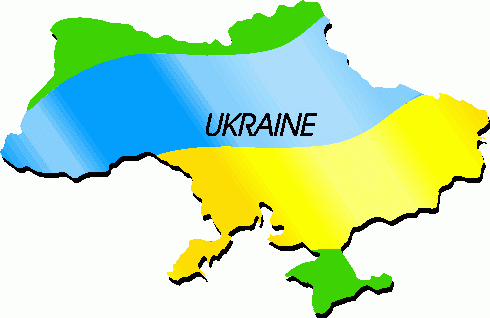Walking in Ukraine's Carpathians - A hike into old Europe
 Borzhava, Ukraine - Don't expect manicured trails, name brand kit, or rangers fussing over park rules in Ukraine's rugged Chornohora and Gorgany districts.
Borzhava, Ukraine - Don't expect manicured trails, name brand kit, or rangers fussing over park rules in Ukraine's rugged Chornohora and Gorgany districts.
The easternmost outcrop of the 1,600-kilometre-long Carpathian Mountains range offers walkers something more retro: A hike into one of Europe's last undeveloped, but still populated highlands.
Mount Tenaptin, a forested and modest granite rise topped by gorse and Alpine grass near the town Volovets, was recently a good case in point.
Backpackers in pairs or individuals slowly broke out of the beech and fir tree line. Most were breathing hard after a 700 metre climb over a steep and quite unimproved gravel and rock trail.
Higher up, dotting the open ridge, a half-dozen berry pickers gathered fruit for tinning or resale. After a few "hellos," hikers and the villagers went about their business. Toward evening the backpackers made camp and the berry pickers headed down to the valley, leaving the high ground and its wide-ranging views to the visitors.
Ukraine's Carpathian Mountain districts are among Europe's poorest regions, where people even if employed can earn less than 100 euros (142 dollars) a month. Many families collect fruit or berries in the forests as diet supplements, and shepherds still accompany sheep or goats to high pastures for the summer.
Backpacker questions on water sources or the best route up the hill are received politely and patiently. An inquiry into the potential health benefits of a particular berry, or recent sightings of the coveted Parasol Mushroom, can stretch into a half-hour discussion.
But just as it is difficult, even in the more remote reaches of Ukraine's Carpathian Mountain provinces, to take total leave of human contact, the region offers visiting hikers the same near-total freedom of movement enjoyed by the mountaineers.
With rare exceptions like national parks or military training areas, Ukraine's mountains are completely open to trekking. Land belongs almost always to the government, and camping is possible - almost literally - anywhere a fence doesn't physically prevent a pitched tent.
Hiking as a leisure time activity is in its infancy in Ukraine and, aside from a few Soviet-era routes, trails are simply in whatever state nature left them.
Following old trails can lead a walker up a difficult path - on a recent approach to the Veliky Verkh mountain summit more than a kilometre of marked trail was nigh impassible as downed tree trunks, some rotting and others a half-metre thick, blocked the way at five- and ten-metre intervals.
A tech-savvy hiker can find on the internet, and load onto his GPS, digitalised topographic maps issued by the Soviet general staff, which are more than enough to prevent ever getting lost and almost always are accurate even 50 years after their issue on vegetation and even water locations. Book stores in major Ukrainian cities offer paper versions.
But the seat-of-the-pants hiker can navigate throughout Ukraine's Carpathian region, and many do, with neither map nor compass, simply by following the path the others do, and asking questions of other hikers or villagers.
And even if he is well off course, Ukraine's Carpathians are by their very lack of height - with ridges averaging between 1,200 and 1,400 metres - kind to the hiker. Almost everywhere, a valley and a village with communications, possibly a cafe, and usually (but not always) a store, is a three hours walk or less downhill.
Prices are, by European standards, almost ridiculously low. The equivalent of a euro can with care purchase materials for a full trail meal, or two litres of solid draught beer in a pub.
The Carpathian villages themselves are, for visitors to the region, a step back to an older Europe. The better roadway is frequently cobblestones laid down in the early 1900s when west Ukraine was still part of Poland, most roads are dirt, cars are rare, and every afternoon cows meandering back home from the day's grazing take over the village's main street.
A hiker on the trail can, in the right season, take real steps towards living off the land. Bilberry, wild strawberries and blackberries abound in the woods, and on the higher slopes in August practically limitless numbers of yew berries and cowberries are there for the picking.
Getting there: The regional hub for Ukraine's Carpathian region is Lviv. European travellers to the city can choose from overnight passenger trains via Krakow, Budapest, and Bratislava; or air service from Warsaw, Frankfurt, Vienna, Dortmund, and Wroclav. Once in Lviv most hikers use Ukraine's cheap local train or bus service to trailhead towns.
There are Ukrainian tourist agencies aplenty willing to offer guided hiking tours in the region, but an even moderately =self-sufficient walker should be able to find his way on his own.
Internet: www. tourism-carpathian. com. ua/en/, www. tryukraine. com/carpathians/hiking. shtml, www. velokarpaty. com/en/articleItem/12 (for the lowdown on Carpathian Mountain berries). (dpa)